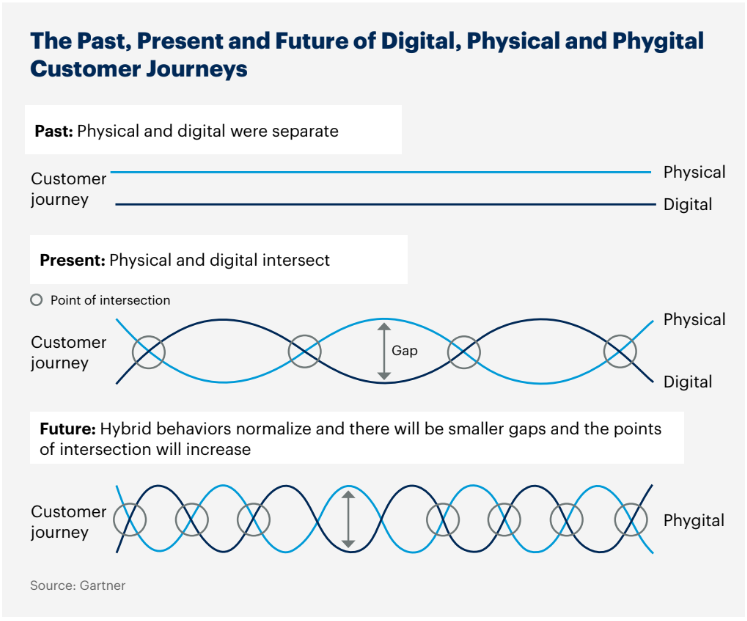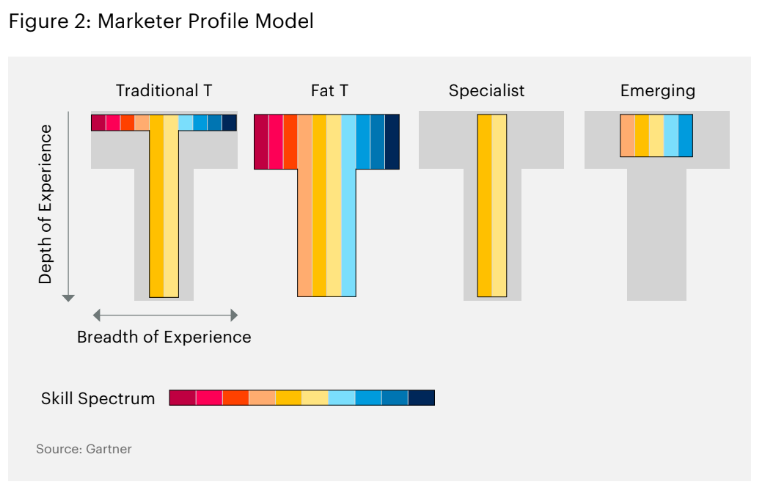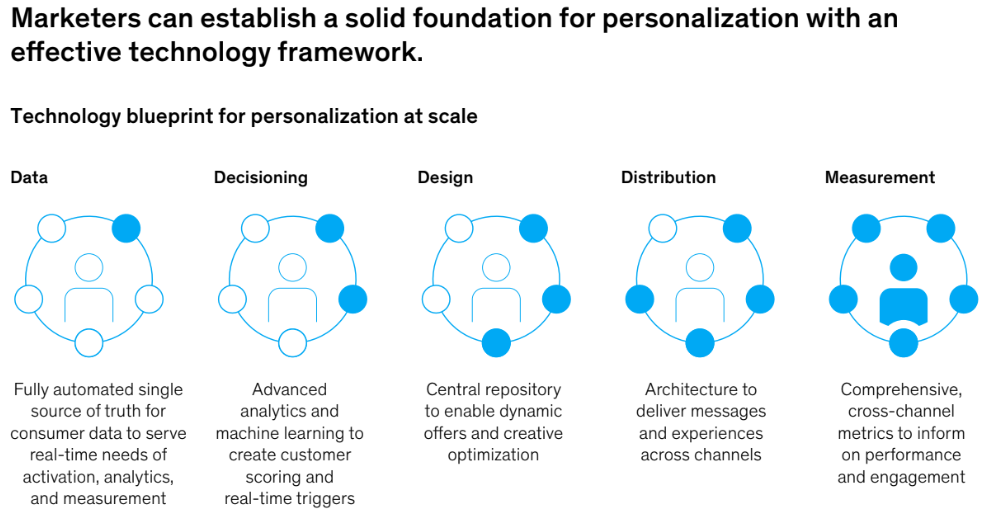Alright, stepping into the digital shoes of global marketing! Let’s talk about something fundamental yet often frustrating: knowing if our marketing money is actually working. We’re entering a new era, and it’s time to ditch guesswork and embrace a smarter way to measure our impact.
Is Your Marketing Money Really Working? Say Hello to Performance Branding!
Hey everyone, let’s talk about marketing. As marketers, we pour our energy, creativity, and significant budgets into reaching people, building connections, and ultimately, boosting the bottom line. But let’s be honest, figuring out exactly which dollar led to which outcome, especially for those early-stage efforts like building brand awareness, can feel like trying to solve a mystery with half the clues missing.
The Utopian Vision: Every Marketing Dollar a Predictable Investment
Picture this: a future where you know, with incredible confidence, the return you’ll get from every single marketing activity. Not just the clicks and conversions at the end of the journey, but the real business impact of building a powerful brand, sparking initial interest, and engaging people long before they’re ready to buy.
In this utopian future, marketing isn’t seen as a nebulous expense, but as a portfolio of smart investments. We’re not guessing which awareness campaign worked; we’re seeing how specific interactions influence customer behavior much earlier in their journey, directly linking brand building efforts to measurable growth. Our budgets are managed with rigor, much like a financial investment, and everyone, including the CFO, has a clear, shared understanding of the value marketing generates. This isn’t fantasy; this is the promise of what we call Performance Branding.
A Glimpse of What’s Possible Today
Just recently, we’ve seen powerful indicators of this shift. *For instance, our research shows that companies investing heavily in Artificial Intelligence (AI) are already seeing significant uplifts – somewhere between 3 to 15 percent in revenue and 10 to 20 percent in sales ROI. This isn’t just about optimizing the late stages; it’s AI technology, and specifically Generative AI (Gen AI), starting to revolutionize how we understand and engage customers from the very beginning, disrupting traditional thinking around customer experience, productivity, and growth. This hints at the potential when we apply advanced tech and data to all marketing activities, including brand building.
* AI-powered marketing and sales reach new heights generative AI, article by McKinsey, 2023
The Problem: Why Measuring Brand ROI Feels So Hard?
So, why aren’t we already living in that utopian world? The reality is marketers face some big challenges when trying to prove the return on investment (ROI) for everything they do.
- Constantly Changing Landscape: Customer expectations are always shifting, and the marketplace is full of disruptions. It’s tough to keep up and act fast.
- Heavily focusing on the Finish Line: Many traditional ways of measuring marketing ROI, like Marketing-Mix Modeling (MMM) and Multitouch Attribution (MTA), are really focused on the end of the customer journey – the part right before a purchase happens. They miss a lot of the important stuff that happens earlier, like when someone first hears about your brand or starts researching.
- Stuck in the past data: These traditional models often rely on historical data. They tell you what worked last quarter or last year, but they’re not great at telling you what’s working right now or predicting what will work tomorrow. As one veteran marketer put it, “Increasingly, it feels like we’re trying to solve tomorrow’s problems with yesterday’s tools”.
- Not Enough Detailing of Data: Except for super granular digital data, the data sets used are often not detailed enough. This makes it hard to understand the impact at the individual customer level.
- Ignoring innovation: Traditional methods struggle to account for the impact of things like the message itself or the creative execution. Did that amazing video ad actually make a difference? It’s hard to tell with old tools.
- Measurement is Separate from Doing: There’s often a disconnect between how marketing is measured and how campaigns are actually run. Insights from measurement don’t always easily translate into real-time adjustments.
- No Real-Time Help: Most existing approaches don’t support optimizing campaigns as they are happening. We can’t make quick adjustments based on what the data is telling us now.
These limitations leave many marketers, and importantly, their CFOs, skeptical about marketing’s ability to clearly demonstrate value and drive growth. It leads to a feeling that the budget for brand activities, especially in the “mid- and upper funnel,” is managed with less rigor, sometimes based on guesswork or relying on external agencies to tell them what to do.
The Link: Solving Problems, Achieving the Vision
Here’s our belief: these problems are the only thing standing between us and that utopian vision of predictable marketing investment. If we can overcome the limitations of measuring early-stage impact, connect data across the entire customer journey, and use technology to understand customer behavior at a deep level, then managing a larger portion of our marketing budget like a true investment becomes not just possible, but the standard. This is where Performance Branding comes in.
Solutions: Making Performance Branding a Reality
Moving to Performance Branding requires a fundamental shift, but it’s absolutely achievable. It’s about applying the rigor and data-driven approach of traditional “performance marketing” (the kind focused on the very end of the funnel) to the crucial earlier stages.
- Build a Solid Data Foundation: This is non-negotiable. You need good data, and everyone needs to agree on what the truth is. The best way to achieve this is often by building a Customer-Data Platform (CDP). This platform pulls together data from all sorts of places (internal, external, third-party – responsibly and compliantly, of course) and links it to the level of individual customers. This gives you that crucial holistic view. Prioritizing data preparation is essential, especially for leveraging AI-driven insights.
- Connect the Dots: Use sophisticated data techniques to understand shopper preferences and behavior across different channels and devices. This allows you to compare the impact of spending across different media types and see how brand activities influence customers throughout their entire decision journey, not just at the very end.
- Break Down Silos: Performance branding provides a single source of truth that helps different parts of the marketing organization work together better. It replaces bickering over different data sets with a shared view focused on what’s best for the brand. As one CMO found, having this unified view “put an end to the bickering”.
- Embrace the Right Technology: Beyond a CDP, you need technology that enables adaptable operations. This includes tools for dynamic audience targeting and segmentation, creating personalized content at scale (hello, Gen AI!), optimizing campaigns through testing (like A/B testing and Dynamic Creative Optimization (DCO)), and automating workflows. Gen AI can make personalized content development much faster. You also need systems like a Digital Asset Management (DAM) system to easily reuse and manage creative content. A robust technology stack built on data, decisions, design, distribution, and measurement (“5 Ds”) is foundational.
- Develop Multidisciplinary Teams: Modern marketing requires people who are deep experts in one area (“T-shaped” marketers) but also understand the broader marketing landscape and how different functions connect. This helps bridge gaps, like the one between data science and brand marketing, enabling better collaboration and creativity. This requires a focus on upskilling and training across the organization.
- Adopt Agile Ways of Working: Agile marketing, with its short work cycles or “sprints” focused on specific deliverables, is crucial for testing and learning quickly. This allows you to adapt based on real-time data and double down on tactics that are proven to work. While shifting to agile with partners can be challenging, solutions like flexible agreements and transparent data sharing are key.
- Focus on Smart Spend Management: Don’t just accept agency fees or traditional approaches. Know what you’re paying for, arm yourself with comparable price data for negotiations, launch frequent pitches, use flexible agreements (SOWs), and tailor agency teams to the actual work needed. Use data to identify what’s working and eliminate ineffective spend.
- Speak the Language of Business: To gain confidence and support from the C-suite, especially the CFO, demonstrate marketing’s value using business metrics they understand, like ROI, Customer Lifetime Value (CLV), and Net Promoter Score (NPS).
Applying these principles helps clarify customer behavior early on and allows you to manage more of your budget strategically, linking brand investment directly to growth outcomes. It requires courage and a commitment to continuous learning, as tools and consumer behaviors evolve rapidly. It also increases the importance of human creativity and judgment in making your brand distinct.
Performance branding isn’t just a buzzword; it’s the future of marketing. It’s about using data and technology not to replace creativity or human connection, but to make them more powerful, more targeted, and ultimately, more impactful on the bottom line.
What are your thoughts? Are you already implementing elements of performance branding? What are the biggest challenges you face in measuring the ROI of your brand building efforts? Let’s discuss in the comments below!
At Zamun, we help businesses across industries to unlock the full power of marketing. From building strong data infrastructure to integrating Gen AI tools and optimizing cross-channel strategies, our tailored marketing solutions connect brand building to real business results. Get in touch today and see how we can help your business stay ahead of the curve.To know more about how we can take your organization to a higher orbit, visit Our Services Page or drop in an email to connect.
FAQs
Performance Branding combines the creative, brand-building side of marketing with the data-driven approach of performance marketing. Unlike traditional methods that focus only on short-term results, it measures and optimizes the full customer journey — from awareness to conversion.
Most tools focus on end-stage conversions and use past data, missing the early interactions that build interest and trust. Performance Branding addresses this by linking all touch points and showing how early-stage engagement leads to long-term growth.
You’ll need a solid tech stack — including a Customer Data Platform (CDP), dynamic targeting tools, Gen AI for content, real-time analytics, and platforms like DAM for asset management. These tools help gather insights, personalize experiences, and optimize campaigns on the fly.
Absolutely. Generative AI is already helping brands create personalized content faster and better understand customer behavior, leading to 10–20% higher ROI and more meaningful engagement.
Start by building a clean, unified data foundation. From there, adopt agile processes, invest in the right tools, up-skill your team, and track metrics that align with business outcomes — not just ad clicks.
Glossary
MMM: Marketing Mix Modeling (MMM) is a data-driven approach that helps marketers understand and quantify the impact of their marketing activities on sales and other key performance indicators (KPIs).
MTA: Multi-Touch Attribution (MTA) is a marketing measurement method that evaluates the impact of all customer interactions or “touch points” leading up to a conversion.
DCO: Dynamic Creative Optimization (DCO) is a technique that uses real-time data to create and deliver personalized and optimized ad creatives to viewers.
DAM: Digital Asset Management (DAM) is a system for organizing, storing, and retrieving digital assets like images, videos, and documents.
CLV: Customer Lifetime Value (CLV) is a metric that estimates the total revenue or profit a business can expect to generate from a single customer throughout their relationship with the company.
NPS: Net Promoter Score (NPS) is a customer loyalty metric that measures how likely customers are to recommend a company or product to others, using a single-question survey.
Sources
1. Unlocking the next frontier of personalized marketing, Article by McKinsey, 2025
2. AI-powered marketing and sales reach new heights generative AI, article by McKinsey, 2023
3. Performance branding and how it is reinventing marketing ROI, Article by McKinsey, 2020
4. 4 Steps for Building Greater Agility in Your Marketing Organization, Article by Gartner, 2023
5. The forgotten hero of marketing excellence: Spend management, Article by McKinsey, 2020
6. Gartner Marketing Predictions, Report by Garter, 2025



